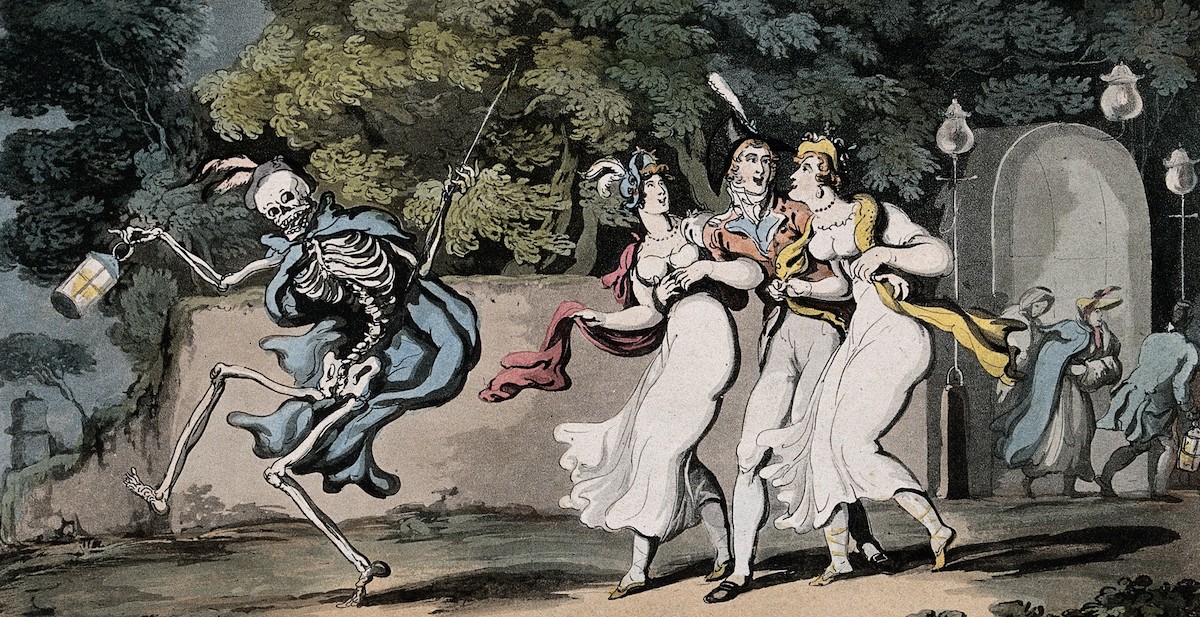The Long View on Epidemics, Disease and Public Health: Research from Economic History – Part B
This piece is the result of a collaboration between the Economic History Review, the Journal of Economic History, Explorations in Economic History and the European Review of Economic History. More details and special thanks below.
—
/cdn.vox-cdn.com/uploads/chorus_image/image/47118262/shutterstock_237231865.0.0.jpg)
Everett Historical/Shutterstock
As the world grapples with a pandemic, informed views based on facts and evidence have become all the more important. Economic history is a uniquely well-suited discipline to provide insights into the costs and consequences of rare events, such as pandemics, as it combines the tools of an economist with the long perspective and attention to context of historians. The editors of the main journals in economic history have thus gathered a selection of the recently-published articles on epidemics, disease and public health, generously made available by publishers to the public, free of access, so that we may continue to learn from the decisions of humans and policy makers confronting earlier episodes of widespread disease and pandemics.
Generations of economic historians have studied disease and its impact on societies across history. However, as the discipline has continued to evolve with improvements in both data and methods, researchers have uncovered new evidence about episodes from the distant past, such as the Black Death, as well as more recent global pandemics, such as the Spanish Influenza of 1918. In this second instalment of The Long View on Epidemics, Disease and Public Health: Research from Economic History, the editors present a review of two major themes that have featured in the analysis of disease. The first includes articles that discuss the economic impacts of historical epidemics and the official responses they prompted. The second turns to the more optimistic story of the impact of public health regulation and interventions, and the benefits thereby generated.

Epidemics and the Economy
The ways in which societies and economies are affected by repeated epidemics is a question that historians have struggled to understand. Paolo Malanima provides a detailed analysis of how Renaissance Italy was shaped by the impact of plague: ‘Italy in the Renaissance: A Leading Economy in the European Context, 1350–1550’. Economic History Review 71, no. 1 (2018): 3-30. The consequences of plague for Italy are explored in even more detail by Guido Alfani who demonstrates that the peninsula struggled to recover after experiencing pervasive mortality during the seventeenth century: ‘Plague in Seventeenth-century Europe and the Decline of Italy: An Epidemiological Hypothesis’. European Review of Economic History 17, no. 4 (2013): 408-30. Epidemics cause multiple changes to the economic environment which necessitates a multifaceted response by government. Samuel Cohn examines the oppressive nature of these reactions in his luminous study of the way European governments sought to prevent workers benefiting from the increased demand for their labour following the Black Death: ‘After the Black Death: Labour Legislation and Attitudes Towards Labour in Late-Medieval Western Europe’. The Economic History Review, 60, no. 3 (2007): 457-85.

Public Health
Richard Easterlin’s panoramic overview of mortality shows that government policy was critical in reducing levels of mortality from the early nineteenth century. Economic growth by itself did not lift life expectancy. This major paper illuminates the essential contribution of public intervention to health in modern societies: “How Beneficent Is the Market? A Look at the Modern History of Mortality.” European Review of Economic History 3, no. 3 (1999): 257-94. . Does strict health regulation save lives? Alan Olmstead and Paul Rhode respond to this question in the affirmative by explaining how the US federal government succeeded in lowering the spread of tuberculosis by establishing controls on cattle in the early part of the twentieth century. Their analysis has considerable contemporary relevance: only robust and universal controls saved lives: ‘The ‘Tuberculous Cattle Trust’: Disease Contagion in an Era of Regulatory Uncertainty’. The Journal of Economic History 64, no. 4 (2004): 929–63.
Human society has achieved enormous gains in life expectancy over the last two centuries. Part of the explanation for this improvement was improvements in key infrastructure. However, as Daniel Gallardo‐Albarrán demonstrates, this was not simply a question of ‘dig and save lives’, because it was the combination of types of structure — water and sewers – that mattered: ‘Sanitary infrastructures and the decline of mortality in Germany, 1877–1913’, The Economic History Review (2020). One of the big goals of economic historians has been to measure the multiple benefits of public health interventions. Brian Beach, Joseph Ferrie, Martin Saavedra, and Werner Troesken, provide a brilliant example of how novel statistical techniques allow us to determine the gains from one such intervention – water purification. They demonstrate that the long-term impacts of reducing levels of disease by improving water quality were large when measured in education and income, and not just lives saved: ‘Typhoid Fever, Water Quality, and Human Capital Formation’. The Journal of Economic History 76, no. 1 (2016): 41–75. What was it that allowed European societies to largely defeat tuberculosis (TB) in the second half of the twentieth century? In an ambitious paper, Sue Bowden, João Tovar Jalles, Álvaro Santos Pereira, and Alex Sadler, show that a mix of factors explains the decline in TB: nutrition, living conditions, and the supply of healthcare: ‘Respiratory Tuberculosis and Standards of Living in Postwar Europe’. European Review of Economic History 18, no. 1 (2014): 57-81.

This article was compiled by:
- Patrick Wallis, Giovanni Federico, and John Turner, for the Economic History Review;
- Dan Bogart, Karen Clay, and William Collins, for the Journal of Economic History;
- Kris James Mitchener, Carola Frydman, and Marianne Wanamaker, for Explorations in Economic History;
- Joan Roses, Kerstin Enflo, and Christopher Meissner, for European Review of Economic History
If you wish to read further, other papers on this topic are available on the journal websites:
- https://www.cambridge.org/core/journals/journal-of-economic-history/free-articles-on-pandemics
- https://www.journals.elsevier.com/explorations-in-economic-history/featured-articles/contagious-disease-on-economics
* Special thanks to Leigh Shaw-Taylor, Cambridge University Press, Elsevier, Oxford University Press, and Wiley for their advice and support.

